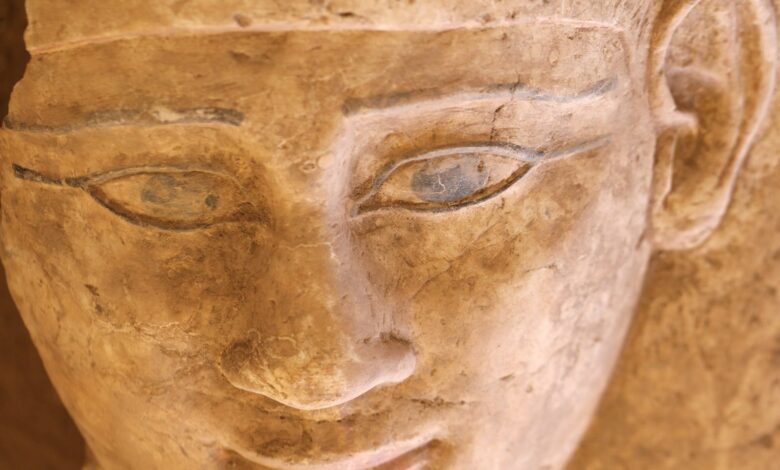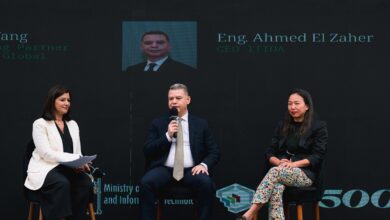
A joint Egyptian-Italian archaeological mission, led by the Supreme Council of Antiquities and the University of Milan, discovered several rock-cut tombs dating back to the Greek and Roman periods, containing well-preserved hieroglyphic inscriptions.
The discovery was made in the cemetery surrounding the Aga Khan Mausoleum on the West Bank of Aswan.
Excavation work also revealed Tomb #38, prominent for its design and structural condition. It lies more than two meters underground and is led by a nine-step stone staircase surrounded by mudbrick terraces, which were used for placing funerary offerings.
Inside the tomb, a limestone sarcophagus measuring approximately two meters in height was found, placed atop a rock platform carved directly into the mountain.
It featured a human-shaped lid bearing the clear features of a human face, adorned with a wig and striking decorations, as well as two columns of hieroglyphic texts recording prayers to the local Aswan deities.
The Secretary-General of the Supreme Council of Antiquities Mohamed Ismail Khaled explained that this discovery is clear evidence of the continued funerary use of the area by various social classes.
Minister of Tourism and Antiquities Sherif Fathy hailed the discovery as a valuable addition to Aswan Governorate, showcasing the diversity and richness of ancient Egyptian civilization throughout the ages.
He added that it further underscores the importance of international scientific cooperation in supporting archaeological discovery efforts, as the discovered tombs open new horizons for understanding the nature of local society in Aswan during the Ptolemaic and Roman periods.




